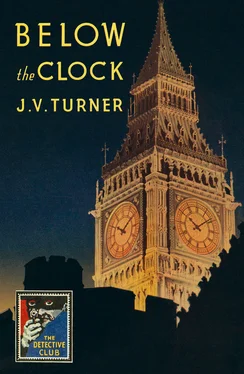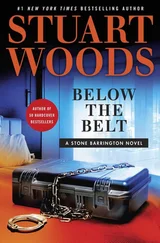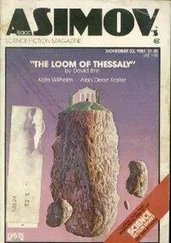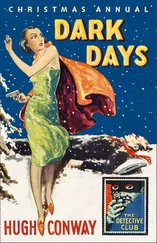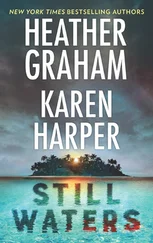A STORY OF CRIME
BY

WITH AN INTRODUCTION BY
COLLINS CRIME CLUB
an imprint of HarperCollins Publishers Ltd
1 London Bridge Street
London SE1 9GF
www.harpercollins.co.uk
First published in Great Britain for The Crime Club
by W. Collins Sons & Co. Ltd 1936
Introduction © David Brawn 2018
Cover layout design © HarperCollins Publishers Ltd 2018
A catalogue copy of this book is available from the British Library.
This novel is entirely a work of fiction. The names, characters and incidents portrayed in it are the work of the author’s imagination. Any resemblance to actual persons, living or dead, events or localities is entirely coincidental.
All rights reserved under International and Pan-American Copyright Conventions. By payment of the required fees, you have been granted the non-exclusive, non-transferable right to access and read the text of this e-book on screen. No part of this text may be reproduced, transmitted, down-loaded, decompiled, reverse engineered, or stored in or introduced into any information storage and retrieval system, in any form or by any means, whether electronic or mechanical, now known or hereinafter invented, without the express written permission of HarperCollins.
Source ISBN: 9780008280260
Ebook Edition © April 2018 ISBN: 9780008280277
Version: 2018-03-23
TO MY FRIEND
JOHN MEIKLE
Table of Contents
Cover
Title Page
Copyright
Dedication
Below the Clock
Introduction
Chapter I
Chapter II
Chapter III
Chapter IV
Chapter V
Chapter VI
Chapter VII
Chapter VIII
Chapter IX
Chapter X
Chapter XI
Chapter XII
Chapter XIII
Chapter XIV
Chapter XV
Chapter XVI
Chapter XVII
Chapter XVIII
Chapter XIX
Chapter XX
Chapter XXI
Chapter XXII
Chapter XXIII
Chapter XXIV
Chapter XXV
Chapter XXVI
The Detective Story Club
About the Publisher
‘THE DETECTIVE STORY CLUB is a clearing house for the best detective and mystery stories chosen for you by a select committee of experts. Only the most ingenious crime stories will be published under the THE DETECTIVE STORY CLUB imprint. A special distinguishing stamp appears on the wrapper and title page of every THE DETECTIVE STORY CLUB book—the Man with the Gun. Always look for the Man with the Gun when buying a Crime book.’
Wm. Collins Sons & Co. Ltd.,1929
Now the Man with the Gun is back in this series of COLLINS CRIME CLUB reprints, and with him the chance to experience the classic books that influenced the Golden Age of crime fiction.
THE Elizabeth Tower is purportedly the most photographed building in the UK, and yet most people would not be able to name it. But as the clock tower that dominates the Palace of Westminster and houses the great bell of Big Ben, it is an instantly recognisable global landmark. Completed in 1859 as part of a 30-year rebuild of the Houses of Parliament after the original palace complex was all but destroyed by fire in 1834, the tower and its clock face quickly became the defining symbol both of the mother of parliaments and of London itself, and the hourly chimes of its 14-tonne bell indelibly associated over 157 years with national stability and resilience. When the bell was silenced on 21 August 2017 for an unprecedented four-year programme of essential maintenance, for some it was as though a death had occurred at the heart of Westminster.
In the annals of crime fiction, of course, deaths at Westminster are all too common. But this was not always the case. When Collins’ Crime Club published J. V. Turner’s Below the Clock in May 1936, the idea of a minister being killed in the chamber was rather sensational, not to say disrespectful of the high office. Ngaio Marsh had dispatched the Home Secretary in The Nursing Home Murder in 1935, although even she hadn’t the audacity to have him drop dead at the Despatch Box. But then Marsh’s stories were not as audacious as those of J. V. Turner.
John Victor Turner, known to family and friends as Jack, was the youngest of three boys in a family of six children. His father Alfred was a saddle-maker, who married Agnes Hume in Chorlton-cum-Hardy, Manchester, in 1890. Jack was too young to serve in the First World War, but his eldest brother Alfred (after his father) joined up at only 16 and was profoundly affected by shell-shock for the rest of his life. The middle brother, Joseph, moved to London and joined the police, and eventually attained a senior rank at Scotland Yard. Jack himself attended Warwick School and worked on a local newspaper before moving to Fleet Street, where he worked for the Press Association, Daily Mail, Financial Times and as a crime reporter on the Daily Herald . Turner was seemingly married twice, his first wife having tragically drowned.
At first sight, J. V. Turner was not a prolific author, having written seven detective novels under his own name, all of them featuring the solicitor-detective Amos Petrie, published between 1932 and 1936. However, under the pseudonyms Nicholas Brady and more famously David Hume, Turner wrote almost 50 crime novels in a relatively short writing career. He wrote impressively quickly, publishing up to five books a year, with his obituary in the New York Times claiming, ‘while still in his early thirties [he] was often called the second Edgar Wallace. At one period he wrote a novel a fortnight.’
Some of David Hume’s books bore an author photo and short biography on the back of the dust jacket. Under the heading ‘If David Hume can’t thrill you no one can’, it revealed a little about the author:
‘David Hume has an inside knowledge of the criminal world such as few crime authors can ever hope to command, for he has had first-hand experience of it for over fourteen years. During his nine years as a crime reporter he spent most of his days at Scotland Yard, waiting for stories to “break”. In this way he gained an extraordinarily wide and intimate knowledge of criminals and the methods employed in tracking them down. And his personality is such that he won his way completely into the confidence of the criminals themselves, who revealed to him the precise methods they employ to enter a house or to open a safe. Indeed, no one knows more about the technique of crime or criminal detection: and (we should add) David Hume, far from sitting back on his author’s chair, is taking care to maintain the contacts from which comes the convincing realism that is the greatest feature of his books!’
Hume’s supercharged thrillers, dripping with underworld slang, typically dealt with gangs in Soho and Limehouse and featured Britain’s first home-grown ‘hardboiled’ detective. The Private Eye was an established fixture of the American detective novel by 1932, but when Mick Cardby appeared in the first David Hume novel Bullets Bite Deep , he must have been something of a revelation for readers. Hume’s version of London was a city of gun-toting gangsters, and the fist-swinging Cardby—a detective who tended to rely on brawn rather than brains—offered a refreshingly exciting alternative to the cerebral whodunits that had grown so incredibly popular over the previous decade. Although they would continue to dominate the genre in the years leading up to the Second World War (and arguably beyond), tastes were beginning to change, and as authors and publishers became more innovative, so came diversity within the genre.
Читать дальше
